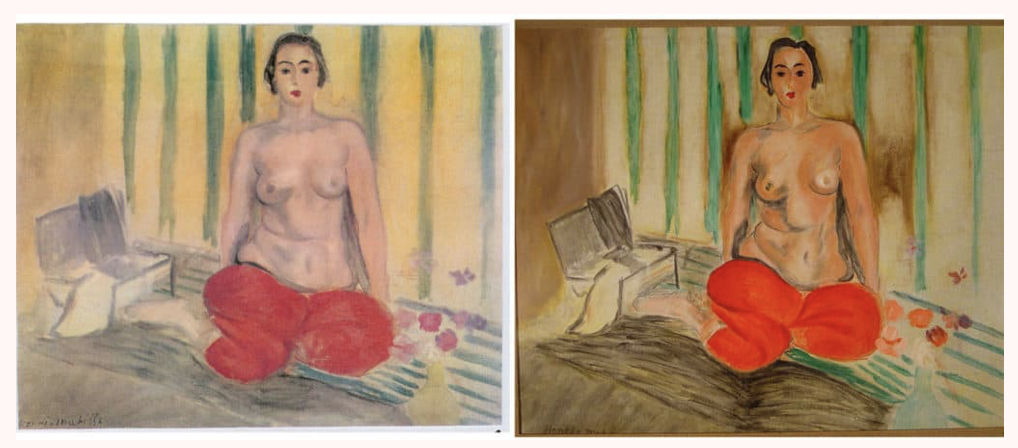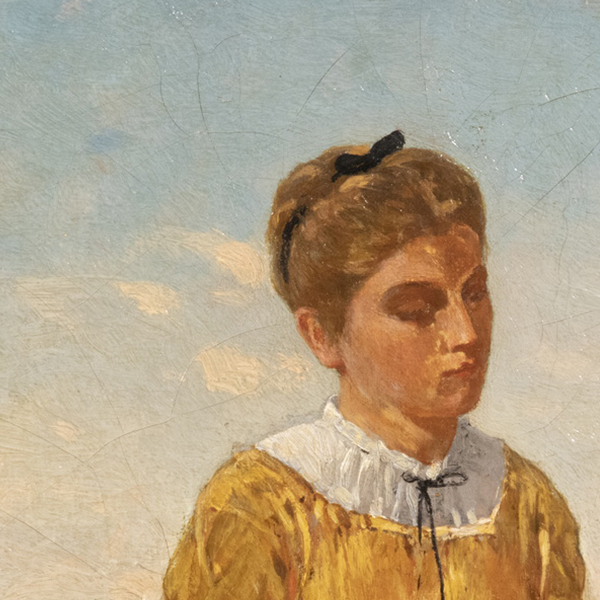What to Look For When Buying Antique Paintings for Sale
Buying antique paintings for sale can be a hit or miss situation: you can either end up with a true antique or go home to find that you’ve overpaid for a forgery. So, what do you need to know before you bid on antique artworks?
First things first! Not every online seller is created equal. If you buy antique paintings from a vetted platform like Bidsquare, you can be much more certain about the quality of goods you're purchasing as well as the reputation of the auction house you’re buying them from.
.jpg)
An example of a famous forgery | John Myatt’s copy of Oleanders, after Vincent Van Gough, 2021 | Courtesy of Washington Green Fine Art. A forgery purposefully exhibited in Treasures on Trial by Delaware’s Winterthur Museum in 2018.
If you do decide to buy antique art elsewhere then there’s just three steps you need to follow to make sure you’re not hanging a fabricated painting in your newly renovated dining room.
1. Request Documentation
Condition Report
A condition report simply tells you the condition of an artwork. It should include information regarding damage, restoration, alteration, or details like if the original frame has been replaced. While this information may seem trivial, if you’re buying from a seller with a true antique painting, this report is standard and should be in the seller’s possession.
Certificate of Authenticity
In addition, documents pertaining to authentication can help you to determine if a piece is legitimate. For instance, you wouldn’t buy a piece claiming to be by Pablo Picasso if you didn’t have proof that it was really his work, would you? Most high-end seller’s should have a certificate of authenticity completed for the artwork you’re looking to purchase. Even if the piece wasn’t made by someone well known, this certificate merely provides peace of mind that the details of the painting are truthful. Furthermore, certificate of authenticity's should come with a warranty in case the authentication is proven false, if there isn’t a warranty, you can proceed but do so with caution.

Henri Matisse, Odalisque in Red Trousers | Original (left) and fake (right).
In 2002, the Contemporary Art Museum of Caracas recieved a call from a gallery in Miami stating someone had offered him the oppurtunity to purchase 'Odalisque' by Henri Matisse, which he knew was displayed at the museum. When checked, the staff realized the original had been stolen and switched out, for nearly two years, with a poorly executed forgery.
Records of Provenance
Now, let’s talk about provenance! Provenance is considered one of the most important aspects of the research that an individual collector, auction house, museum, or gallerist can do to legitimize their collection. The provenance of any given artwork is simply the transactional history and ownership of an item. Beginning with the location of the manufacturer or artist studio, right down the list, mentioning every owner who has had it in their possession. Most importantly, provenance helps protect collectors from purchasing or helping to sell a piece that’s been stolen. If the seller refuses to provide a record of provenance or there are “gaps” in the record, you may want to move on or seek additional assurances.
2. How to Spot a Fake
A Close Examination
Most of the time a reproduction, attribution or after productions of an artwork are described accordingly in the auction catalog - at least they should be!
If you're only able to look at online images, reproductions of antiques paintings can be spotted with one simple trick but you’ll need several high resolution pictures to do it. First and foremost, make sure you have pictures of the front and back of the art that are not blurry.
Printed reproductions of paintings have teeny, tiny dots on the canvas meant to mimic the look of painterly brush strokes. These dots shouldn’t be confused with pointillism, a painting technique and art movement developed in the 19th century by French painters Georges Seurat and Paul Signac. The dots we’re talking about can only be seen if you zoom in, as much as you can, on the canvas. The dots will produce a similar effect to pointillism, but the multitude and size of the dots on a reproduction create false brush strokes that aren’t really there.
Color Quality
If the canvas and paint are faded in color this means it’s not an antique. Canvas paintings patina with age, meaning they get darker the older they get. This principle applies to the frame as well, which is why you need pictures of the back.
A frame for a vintage piece has dark, patina wood with old nails. However, pieces can be reframed which is why the condition report and provenance is helpful in determining authenticity.
3. Tell-Tale Signs of True Authenticity
Craquelure
For oil paintings, look for craquelure, a web of fine cracks that appear on the canvas, a sign of true aging - there's craquelure on paintings as famous as the Mona Lisa that can be seen with the naked eye!
Above is an example of genuine antique craquelure, an aging effect of paint that appears as light or dense cracks on the surface of an antique painting | Lot 2069, Winslow Homer, Coming Through the Rye (1867) Oil on canvas
An image of the verso, showing signs of darkening and age consistent with genuine antique frames | Lot 2069, Winslow Homer, Coming Through the Rye (1867) Oil on canvas
Remember, if it’s a real antique, it’s more than likely not in perfect condition. Sometimes, auction houses even provide images of black light inspections to study hidden paint layers. The method of using a black light is widely known and practiced and turns out to be very useful! Specialists use black light's to hover a fluorescent UV wand over the front and back of a work. This can help them detect unusual varnish that can be used to cover up a forgery, mold, water damage, or any retouching or "inpainting" that has been made and not yet reported. If you're fortunate to have a fluorescent inspection of a painting, you can get a second opinion from any experienced professional before buying a high-end antique painting.
So, now that you're equipped with these basic investigative skills, buying an antique painting at auction or in person should no longer feel like such a gamble!
Antique paintings can add valuable dimension to any collection and their character will only continue to appreciate with age. Be sure to follow these steps the next time you’re shopping for antique paintings and in the meantime, check out Bidsqare’s upcoming auctions and register to bid online on thousands of antique paintings coming up in our live auctions.
The new Bidsquare mobile app is available to download for free in the Apple Store and Google Play. Download it today to bid on the best fine art and antiques.
_______________________________
With new auctions added daily, we're always ripe for the picking. Be sure to check Bidsquare's monthly finds for little bits of wonderful from every catalog.
Don't have a Bidsquare account? Sign up here!
Be in the know about upcoming auctions and exciting post-sale results by following us on Facebook and Instagram.
- Treasures of the East: Highlights from Brunk Auctions' Asian Art Sale
- Pre-Columbian Art & Beyond: Timeless Legacies of the Ancient Americas
- Featured Artist: Frank Stella (1936–2024)
- A Vanderbilt & Whitney Legacy: The Collection of Marylou Whitney & John Hendrickson
- Behind the Curtain: The Tony Walton Collection at Willow Auction House
- Fine Western & American Art: Coeur d’Alene’s November Sale Celebrates the Spirit of the West
- A Library of Curiosities
- The Poetry of Form: Jean (Hans) Arp’s Lasting Influence on Modern Art
- Modern Meets Antiquity: House of Craven’s Fall Modern Art & Design Signature Auction
- Diving Into History: Nation’s Attic’s Annual Auction Explores the Depths of Diving Innovation



 EUR
EUR CAD
CAD AUD
AUD GBP
GBP MXN
MXN HKD
HKD CNY
CNY MYR
MYR SEK
SEK SGD
SGD CHF
CHF THB
THB
.jpg)














